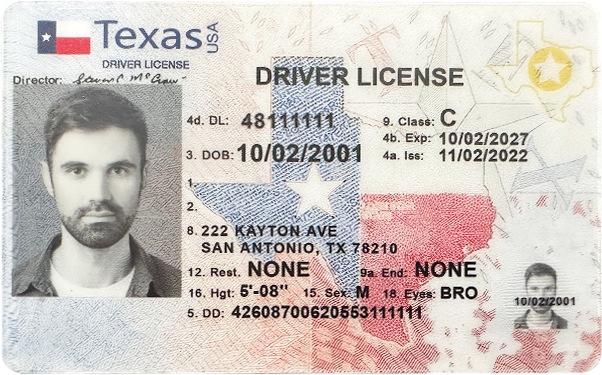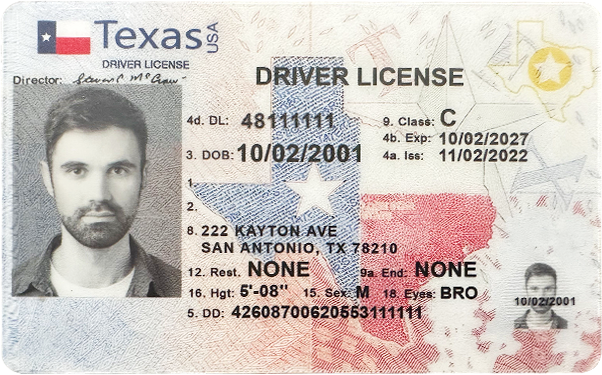Introduction
Airport security is of utmost importance in today’s world. One crucial aspect of this security is the screening of identification documents, such as driver’s licenses. Fake driver’s licenses can pose a significant threat as they can be used by individuals with malicious intent to board flights, potentially endangering the safety of other passengers and crew. Therefore, airports have developed a range of sophisticated methods to detect these counterfeit documents.
Visual Inspection
The first line of defense in screening for fake driver’s licenses at airports is visual inspection. Security personnel are trained to closely examine the physical characteristics of the license. They look for signs of poor – quality printing, such as blurred or smudged text. The colors on a genuine driver’s license are typically vibrant and consistent, while fake ones may have faded or uneven colors.
Another aspect of visual inspection is checking the holograms. Most modern driver’s licenses have holographic images or patterns that are extremely difficult to replicate. These holograms often change appearance when viewed from different angles. Security officers will carefully tilt the license to see if the hologram behaves as expected. If the hologram appears flat or does not change properly, it could be a sign of a fake license.

The edges of the license are also inspected. Genuine licenses usually have smooth, well – cut edges, while fake ones may have rough or uneven edges, indicating that they were not produced using the proper manufacturing techniques.
Magnetic Strip and Barcode Scanning
Many driver’s licenses have a magnetic strip or a barcode on them. Airports use specialized scanners to read the information stored on these magnetic strips or barcodes. The scanner will retrieve data such as the license holder’s name, date of birth, and address. This data is then cross – referenced with a secure database of valid license information.
If the information retrieved from the magnetic strip or barcode does not match the data in the database, or if the barcode is unreadable or has been tampered with, it is a strong indication that the license may be fake. For example, if the name on the license does not match the name associated with the data retrieved from the magnetic strip, security personnel will take further steps to investigate.
Microprinting and Hidden Features
Some driver’s licenses incorporate microprinting as a security feature. Microprinting consists of extremely small text that is not visible to the naked eye without magnification. When a license is suspected of being fake, security officers may use a magnifying glass or a specialized device to check for the presence of microprinting. If the microprinting is missing or is of poor quality, it is likely that the license is counterfeit.
There are also hidden features on many driver’s licenses. These can include ultraviolet (UV) – reactive inks or embedded fibers that are only visible under certain lighting conditions. Special UV lights are used at airports to reveal these hidden features. If the UV – reactive elements do not appear as expected or if the embedded fibers are not present, it can be a sign of a fake driver’s license.
Biometric Verification
In some cases, airports may use biometric verification in conjunction with driver’s license screening. Biometric data, such as fingerprints or facial recognition, can be compared to the data associated with the license holder. For example, if a passenger presents a driver’s license and their fingerprint is scanned, the fingerprint data can be compared to the fingerprint data that is supposed to be linked to the license in a secure database.
If there is a mismatch between the biometric data and the data on the license, it is a clear indication that something is amiss. Facial recognition systems work in a similar way. A camera will capture an image of the passenger’s face, and the system will compare it to the facial image on the driver’s license. Any significant discrepancies can lead to further investigation into the authenticity of the license.
Database Checks
Airports have access to comprehensive databases that contain information about valid driver’s licenses. When a passenger presents a driver’s license, security personnel will run a check against these databases. The databases are constantly updated with the latest information about issued licenses, including any reports of lost, stolen, or revoked licenses.
If a license is found to be on a list of lost or stolen licenses, or if it has been revoked for some reason, security personnel will take immediate action. They may detain the individual presenting the license for further questioning and investigation to determine if the license is being used fraudulently.
Training and Expertise of Security Personnel
The effectiveness of fake driver’s license screening also depends on the training and expertise of airport security personnel. Security officers undergo extensive training to learn about the various security features of different types of driver’s licenses from across the country and even internationally.
They are trained to recognize the latest trends in counterfeiting techniques and how to spot signs of a fake license. Regular refresher courses are provided to keep them up – to – date with the latest developments in license security. This continuous training ensures that security personnel are well – equipped to handle the ever – evolving threat of fake driver’s licenses.
Common Problems and Solutions
- Problem: Poor – quality visual inspection by security personnel
Some security officers may not be as well – trained as they should be in visual inspection techniques. This can lead to fake licenses slipping through the cracks as signs such as poor printing or incorrect hologram behavior may be missed.
Solution: Increase the frequency and intensity of training for security personnel in visual inspection. Provide hands – on training with both genuine and fake licenses to help them become more proficient in identifying the differences.
- Problem: Malfunctioning scanning equipment
The magnetic strip or barcode scanners may malfunction, leading to incorrect readings or an inability to read the data on the license. This can cause delays in the screening process and may result in a fake license not being detected if the scanner fails to retrieve the correct information.
Solution: Implement a regular maintenance and calibration schedule for all scanning equipment. Have backup scanners available in case of equipment failure to ensure continuous and accurate screening.
- Problem: Difficulty in detecting advanced counterfeiting techniques
Counterfeiters are constantly developing new and more sophisticated techniques to create fake driver’s licenses. Some fake licenses may be so well – made that they are difficult to distinguish from genuine ones using traditional screening methods.
Solution: Invest in research and development to stay ahead of counterfeiting techniques. Collaborate with law enforcement agencies and license – issuing authorities to share information about the latest trends in counterfeiting and develop new screening methods accordingly.
- Problem: Inaccurate or incomplete database information
The databases used for license verification may contain inaccurate or incomplete information. This can lead to false positives or false negatives. For example, a valid license may be flagged as fake if there is an error in the database, or a fake license may go undetected if the database has not been updated with the latest information about counterfeit licenses.
Solution: Establish a system for regular database audits and updates. Ensure that data is accurately entered and maintained in the databases, and have a process for quickly correcting any errors or adding new information about fake licenses.
- Problem: Resistance from passengers during biometric verification
Some passengers may be reluctant to provide biometric data, such as fingerprints or facial images, during the screening process. This can disrupt the screening process and make it more difficult to verify the authenticity of the driver’s license.
Solution: Provide clear communication to passengers about the importance of biometric verification for security purposes. Ensure that the process is carried out in a respectful and privacy – compliant manner, and explain the benefits of using biometric data in detecting fake licenses and enhancing overall airport security.
Fake ID Pricing
unit price: $109
| Order Quantity | Price Per Card |
|---|---|
| 2-3 | $89 |
| 4-9 | $69 |
| 10+ | $66 |


